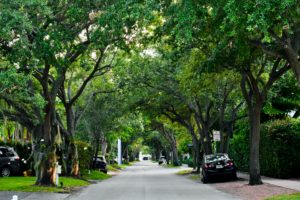New software will help cities use trees to reduce pollution
New open-source software will help cities to use street planting to reduce air pollution.
The Green Infrastructure for Roadside Air Quality programme (G14RAQ) has been designed by researchers from the University of Birmingham. The software is free to use and enables practitioners to estimate the changes in pollutant concentrations caused by different tree-planting schemes.
The software focuses on nitrogen dioxide (NO2) and particulate matter (PM2.5) pollution.
The calculations draw on wind data from monitoring stations across the UK in order to determine how background wind conditions interact with the local urban form and planting.
The researchers have highlighted that there is a common misconception that plants remove or ‘soak up’ air pollution, but in actual fact, planting at this scale primarily serves to distribute pollution by changing air currents within streets and beside open roads.
Because of this, it is important to consider not just the position and amount of planting, but also the layout and orientation of the street.

The software’s performance and underlying science are documented in a paper published last month in the journal, Forests.
Lead researcher, Dr James Levine said: ‘In reducing our exposure to pollution from nearby vehicles, strategic planting can complement essential emission reductions in reducing health impacts.
‘But it’s not as simple as thinking that any planting will do good – if indiscriminate, it’s just as likely to have a negative impact. There are many good reasons to invest in green infrastructure but, if planting in the name of improving air quality, we must ensure it delivers genuine benefits. By estimating the benefits at planning, we can ensure good schemes are robust to cost-cutting and fully realised.’
Paul Nolan OBE, director of the Mersey Forest, added: ‘The GI4RAQ Platform bridges the gap between academic researchers and organisations like The Mersey Forest, cutting through the often-mixed messages regarding the impacts of vegetation on urban air quality, in support of projects delivering genuine, lasting benefits.’
Photo by Faith Crabtree










